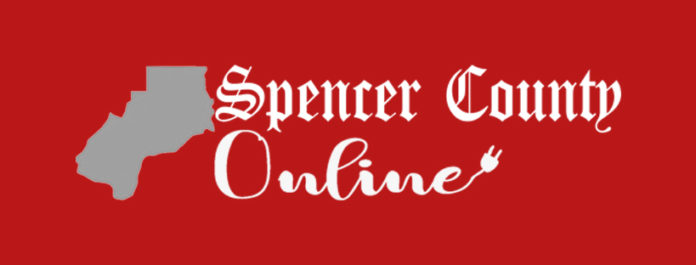by Lisa Hoppenjans and Kathy Tretter
When the Indiana legislature implemented School Choice in 2009, it was designed to give impoverished youth the option to attend charter schools rather than under-performing public schools.
The program no longer serves underprivileged youth, according to the Indiana Coalition for Public Education (ICPE).
North Spencer Superintendent Dan Scherry shared information compiled by the ICPE at the February 22 meeting of the North Spencer School Board.
“We’ve always prided ourselves on remaining non-political,” Scherry said. “And I’m not telling anyone how to vote, but I think it’s important for people to understand the HB 1005 rhetoric regarding increasing school funding.”
The bill will not significantly increase funding for public education, he insisted. The state legislature proposes to increase school funding by three percent, about half a percent will benefit public schools (which educate about 90% of Indiana’s youth). The bulk will be funneled to charter schools, virtual charter schools, religious schools and vouchers for private school tuition, he said.
While the bill, on the surface, adheres to the Constitutional separation of church and state, it provides money for students to attend private, religious schools where there is “zero accountability,” Scherry said. “It allows the state to [indirectly] give religious schools money, but doesn’t allow them to require accountability.”
By the way, since 2009 Indiana teacher pay increases are the last in the United States, which has led to a significant decrease in the number of certified and licensed teachers in the state.
Here’s how it works. Voucher money is not taken away from a local school if a student (or parents) elects to use a voucher to attend a private school. Instead it is subtracted from the State’s Tuition Support Budget. And where does that fund originate? From taxpayers.
While there has been no significant change in public school enrollment, in the 2018-19 school year there were 36,328 voucher students — nearly 60 percent of whom had never attended a public school. In other words, families were already paying full tuition for the privilege of a private school education. The increase from pubic to private was only 3.41 percent.
With House Bill 1005, the voucher program expands so that families who make UP TO THREE TIMES the limit to qualify for reduced price school meals (over five times the federal poverty level) would become eligible for vouchers in 2022-23. That equates for a family of five’s income to $170,274 per year — or more than three times the median household income in Indiana, which appears to be more of a tax break for wealthy families who were already sending their children to private schools than a way for poverty students to attend a better school.
House Bill 1005 also creates a state-funded Education Savings Account that can be used for various educational services, including private school tuition.
According to Dr. Scot Croner, Superintendent of Wa-Nee Community School, “Allowable expenses included tablets, flat screen TV’s and paying cousin Ed to ‘home school’ little Tommy.”
According to Dr. Croner, “There is ZERO financial or academic oversight to either of these programs [vouchers or Education Savings Accounts].”
In reality, the creation of individual state-funded ESAs to be used for educational expenses dilute the quality of educational opportunities and outcomes for Indiana students.
“These decisions are not being made to help needy kids,” noted Scherry. “It’s being given to private schools, some of which can – and do – discriminate.”
In fact, schools that receive vouchers are permitted to deny enrollment to students for any reason, including disability, divorced parents, and a family member within the LGBTQ community.
Scherry also explained, “One legislator from a district in the northern part of the state said she had received negative comments from her constituents, but said she had received just as many comments in favor [of the bill]. Well, many times affluent people are quicker to make their opinions known, while average income people keep their heads down and accept what their legislators do.”
South Spencer School Corporation Superintendent Dr. Richard Rutherford agreed this is not a political issue but an educational issue.
Southeast Dubois County School Superintendent Dr. Jamie Pund has this to say about HB 1005: “Throughout the past 2 years, Southeast Dubois Schools have lost $382,323 to students participating in the voucher program throughout the state of Indiana. It is outrageous to think that Legislators are promoting the expansion of the voucher program to filter additional funding to private schools that have no financial oversight, transparency or reporting – and are not held to the high standards in which public schools are held accountable. This is damaging to all public schools and continues to take away funding and opportunities for kids in our community.”
Since the squeaky wheel gets the grease, readers who have concerns about House Bill 1005 are encouraged to reach out to the legislators who represent them. Senator Mark Messmer, who represents all of Spencer County and half of Dubois County, is sponsoring the house bill on the senate side. He can be reached by email at Senator.Messmer@iga.in.gov or by phone at 800-382-9467.
Senator Erin Houchin, who represents the east side of Dubois County, can be reached by phone 800-382-9467 or 317-232-9400 and by email at Senator.Houchin@iga.in.gov.
Representative Steve Bartels, who serves parts of Spencer and Dubois counties can be emailed at h74@iga.in.gov or by phone 317-232-9802.
Representative Cindy Ledbetter’s contact info is h75@iga.in.gov or 317-232-9769. She represents South Spencer County.
Representative Shane Lindauer, serving the remainder of Dubois County can be reached by phone at 317-234-9028 or 1-800-382-9841 and by email at h63@iga.in.gov.






